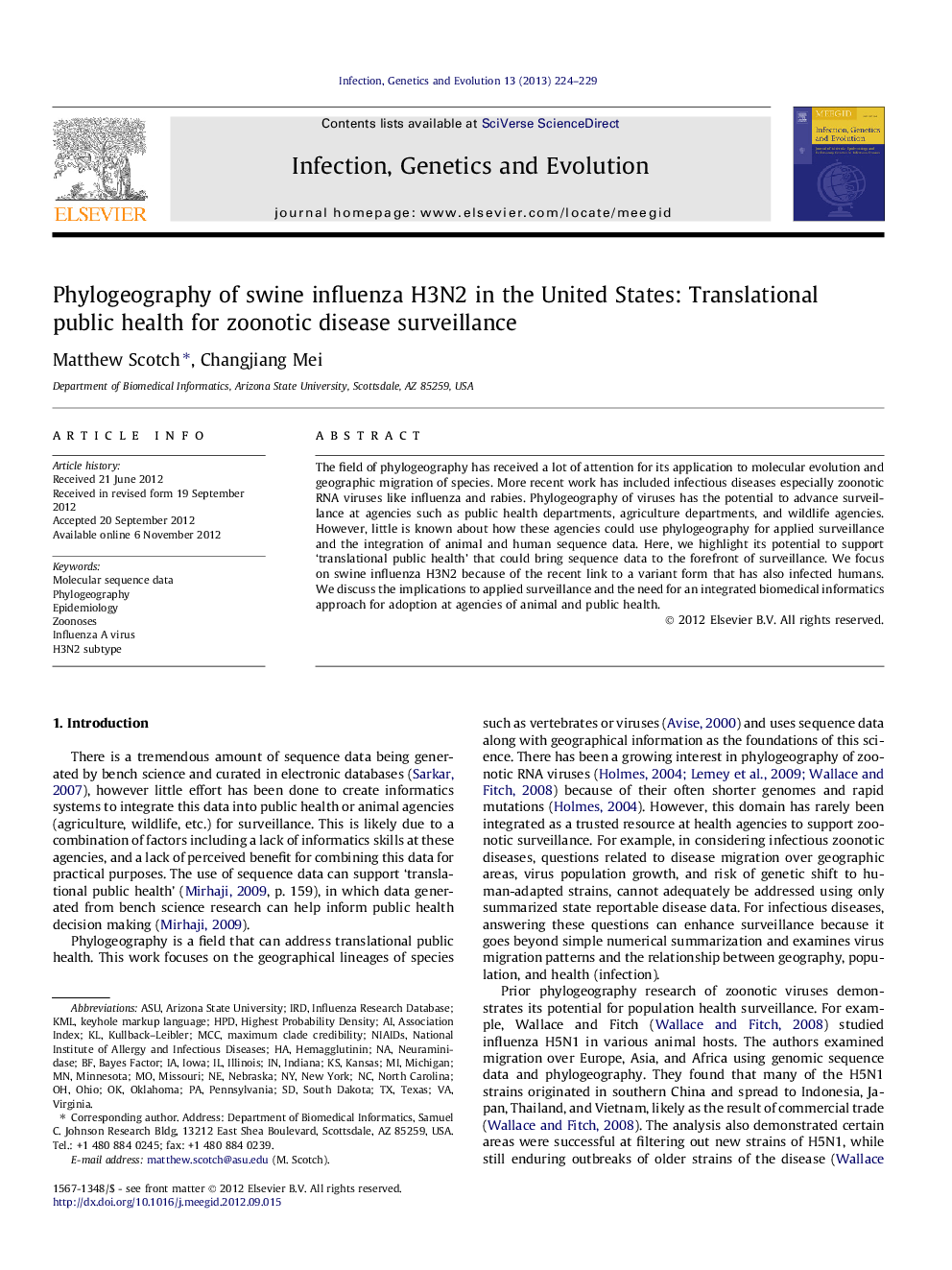| کد مقاله | کد نشریه | سال انتشار | مقاله انگلیسی | نسخه تمام متن |
|---|---|---|---|---|
| 5911018 | 1570190 | 2013 | 6 صفحه PDF | دانلود رایگان |

The field of phylogeography has received a lot of attention for its application to molecular evolution and geographic migration of species. More recent work has included infectious diseases especially zoonotic RNA viruses like influenza and rabies. Phylogeography of viruses has the potential to advance surveillance at agencies such as public health departments, agriculture departments, and wildlife agencies. However, little is known about how these agencies could use phylogeography for applied surveillance and the integration of animal and human sequence data. Here, we highlight its potential to support 'translational public health' that could bring sequence data to the forefront of surveillance. We focus on swine influenza H3N2 because of the recent link to a variant form that has also infected humans. We discuss the implications to applied surveillance and the need for an integrated biomedical informatics approach for adoption at agencies of animal and public health.
⺠Phylogeography can be used for studying the spread of zoonotic viruses. ⺠We focus on swine influenza H3N2 because of its risk of transmission to humans. ⺠We used Bayesian phylogeographic models and statistical phylogeography. ⺠Minnesota was the origin and the Iowa was a secondary center for spread. ⺠Sequence data generated from bench research can support zoonotic surveillance.
Journal: Infection, Genetics and Evolution - Volume 13, January 2013, Pages 224-229